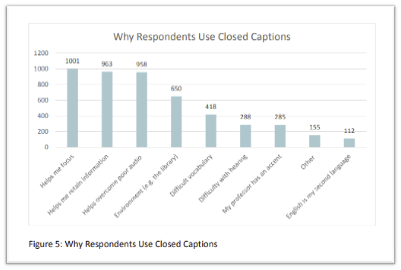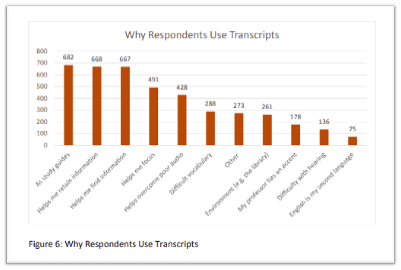Rachel Elfenbein, Senior Product Manager
At Intrepid we believe all learners deserve equal access to content and a great learning experience. Our platform conforms to level AA of the Web Content Accessibility Guideline and we are continually looking for ways to improve the UX for all learners. Earlier this year, we released an auto-transcription and auto-closed caption feature for admin-uploaded videos. This is a cool feature because it bakes in accessibility features into our platform. Besides being kinda magical in its ease and simplicity, there are several other reasons why this is such a cool feature, so I decided to write a blog post to dive a bit deeper on the feature.
“NC State Executive Education immediately leveraged the new auto transcription tool to enhance the learner's engagement and accessibility with our videos. Learners can follow along without missing key concepts, review the content more effectively, and are more attentive during the videos; and from the admin side - it's easy to use. We focus on creating and designing the video and Intrepid handles making the content more accessible. Just another one of the many reasons we're excited to be partnering with Intrepid!”
Pamela Webber, Program Director for Executive Education Online
Transcription is the process of converting audio to written text. Closed captioning is the process of converting audio into time-coded text that is in sync with each frame of a video. Intrepid has always allowed closed-caption files and transcriptions to be uploaded to the platform but they needed to be created by our clients.
We wanted to make it even easier. We developed the auto-transcription using Google’s Video Intelligence api. If you’ve never heard of it, this service uses AI and utilizes pre-trained machine learning models to convert audio to text. The service is a powerful technology and something that Intrepid admins don’t need to interact with. All they need to do is upload their class video. The Intrepid platform extracts the audio and uses the Google AI service to transcribe it and create a closed captioning file (.vtt) that is automatically uploaded along with the video. Another benefit to this approach is that the video content, as text, become searchable within the class. Of course, admins can always manually edit these or turn off auto-transcription altogether for a class.
When I began to research transcription and closed captioning, I thought about them solely as a great accessibility feature for people that are deaf or hard of hearing. After all, approximately 15% of American adults (37.5 million) aged 18 and over report some trouble hearing (1). As I began reading more studies, I learned that the benefits of providing transcripts and closed captioning go well beyond serving this obvious community.
In 2016, 2,124 college student participants responded to questions about their usage of transcription and closed caption and their perceived benefits. The study was conducted by the Oregon State University Ecampus Research Unit. The study found that:
“The perceived benefits of closed captions and transcript use Respondents were asked about whether they perceived closed captions and transcripts as being helpful to their learning. As a percentage of the whole, closed captions were perceived as more helpful with 59.1% of respondents noting that closed captions where either “very” or “extremely” helpful to them. Comparatively, 28% of respondents noted that transcripts were “very” or “extremely” helpful to them.”(2)
As the charts below show, “helps me retain information” was a top perceived benefit for both closed captions and transcripts. The participants believed that consuming the information visually in addition to auditorily helped in their learning. As I looked deeper, I found evidence that backs up the participant’s anecdotal comments. A study published in 2014 found that while in the short-term there isn’t much difference between visual, auditory, and tactile memory retention, over time auditory retention drops off significantly. (3)
 |
 |
Like I said, auto-transcription and closed captioning is a pretty cool feature and is not only vital for making learning accessible, but learners see value in the features when they are provided.
- Blackwell DL, Lucas JW, Clarke TC. Summary health statistics for U.S. adults: National Health Interview Survey, 2012(PDF). National Center for Health Statistics. Vital Health Stat 10(260). 2014.
- Linder, K. (2016). Student uses and perceptions of closed captions and transcripts: Results from a national study. Corvallis, OR: Oregon State University Ecampus Research Unit
- Bigelow J, Poremba A (2014) Achilles’ Ear? Inferior Human Short-Term and Recognition Memory in the Auditory Modality. PLoS ONE 9(2): e89914. https://doi.org/10.1371/journal.pone.0089914
false LOREM IPSUM TITLE




 Previous
Previous